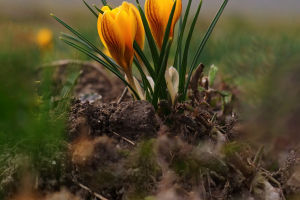When we mention Norway, what comes to mind is the clear blue sea, beautiful fjords, dense forests, pure air, ancient castles, wooden houses, and the mesmerizing Northern Lights.
It's a fairytale-like country.
Norway's beauty is intertwined with the sea—it's known as the "Land of a Thousand Islands" due to its long, winding coastline and numerous coastal islands.
Its vast maritime territory and the unique Gulf Stream nurture abundant fish, making Norway a world-famous "fishing ground." Here, green mountains and blue waters are scenic, and the fisheries resources constitute another kind of beauty.
Norway is the world's second-largest exporter of seafood, with seafood distributed to over 150 countries and regions worldwide.
The abundant seafood is a gift from nature, and Norway has a natural advantage in developing fisheries—with a coastline including fjords totaling 21,000 kilometers in length. Norway's land area is 385,000 square kilometers, while the marine areas available for fishing and aquaculture are six times that of Norway's land area.
Norway's seafood includes wild fish and shellfish captured in the Norwegian Sea and the Barents Sea, as well as farmed fish from hundreds of marine aquaculture sites along the Norwegian coast. Its fresh, frozen, and processed products are exported to over 150 countries and regions.
According to incomplete statistics, over 200 species of fish and shellfish inhabit Norwegian waters, with the most famous being the Norwegian Arctic cod living in the Barents Sea and the Norwegian Sea.
The Barents Sea, with its late development and good preservation, coupled with its cold and clean seawater and strong currents, maintains extremely high purity; while the waters near the Lofoten Islands, where the warm North Atlantic Current meets the cold Arctic Current, remain ice-free year-round.
Under the dual action of ocean currents and seabed structures, nutrients from the deep sea are brought up, enriching plankton and creating excellent conditions for the reproduction and growth of marine organisms. The waters near the Lofoten Islands are the main production area for Norwegian Arctic cod and one of the best fishing grounds in Norway and the world.
Every winter and spring, Norwegian Arctic cod migrate from the Barents Sea to the Lofoten Islands to spawn, and February to April is the main fishing season for cod. In recent years, the Lofoten Islands have produced about 60,000 tons of cod annually, accounting for about 10% of Norway's national cod production.
In addition to Norwegian Arctic cod, Norway also produces green cod, black cod, halibut, herring, mackerel, various salmonids, shrimp, and crab, among other seafood. Ninety percent of the seafood from Norwegian marine fishing and aquaculture is exported, while 10% is consumed in the domestic market.
Highly modernized fishing fleets and strict management regulations ensure the sustainable development of Norway's fisheries.
Take Norwegian Arctic cod as an example: this fish is long-lived, with a maximum age of 40 years, a maximum length of 2 meters, and a weight of 60 kilograms. Its quality is impeccable: not only delicious but also rich in nutrients, low in fat, high in protein, and rich in vitamins B12, selenium, and iodine.
"High-end" aquaculture supports Norway's fishing industry
Norway is a pioneer in the global development of modern aquaculture, with nearly 40 years of history in aquaculture research and production. In Norway, aquaculture farms are scattered across the country, and aquaculture has replaced fishing as the backbone of the Norwegian fishing industry.
Norwegian aquaculture species include salmon, trout, halibut, various shellfish, etc., which are favored for their enticing color, good taste, and production environment, capturing nearly 50% of the international market share.
Norwegian aquaculture adopts advanced deep-sea cage aquaculture platform technology, which almost monopolizes the world's design technology and operational market for deep-sea cage aquaculture platforms, forming a complete industry chain and supply chain from seed breeding, offshore stocking, adult fish farming, live fish capture, fish meat production, logistics sales, as well as feed production, and equipment manufacturing.
Deep-sea aquaculture platforms, also known as large-scale aquaculture vessels, are like complete "sea farms." The aquaculture vessel, with a steel frame structure, can install six 50-meter × 50-meter aquaculture cages on each ship, with a cage depth of up to 60 meters.
The total length of the aquaculture vessel is 430 meters, with a width of 54 meters, and such a ship can accommodate 10,000 tons of adult salmon or over 2 million juvenile fish. Large-scale aquaculture vessels can work at depths of up to 10 meters below sea level.
Large-scale aquaculture vessels are undoubtedly "high-end" technological vessels, with highly automated technology widely applied within them. For example, live fish transport vessels deliver salmon fry to the aquaculture vessel's rearing tanks through pipelines; the salmon feed is delivered directly to the aquaculture vessel's feed storage bin by feed transport vessels through pipelines, and then uniformly sprayed into the rearing tanks by automatic sprayers;
the operation of underwater oxygenators ensures sufficient dissolved oxygen in the water inside the vessel to meet the growth needs of salmon. When the salmon grow large enough, they are transported to large-scale processing plants by pipelines. With machines replacing manpower, a large aquaculture vessel requires only 3 to 5 workers to rear millions of fish.
In Norway, there are more than 600 salmon "sea farms," with an annual production of over 200,000 tons in the waters near the Lofoten Islands and Nordland County in northern Norway.


